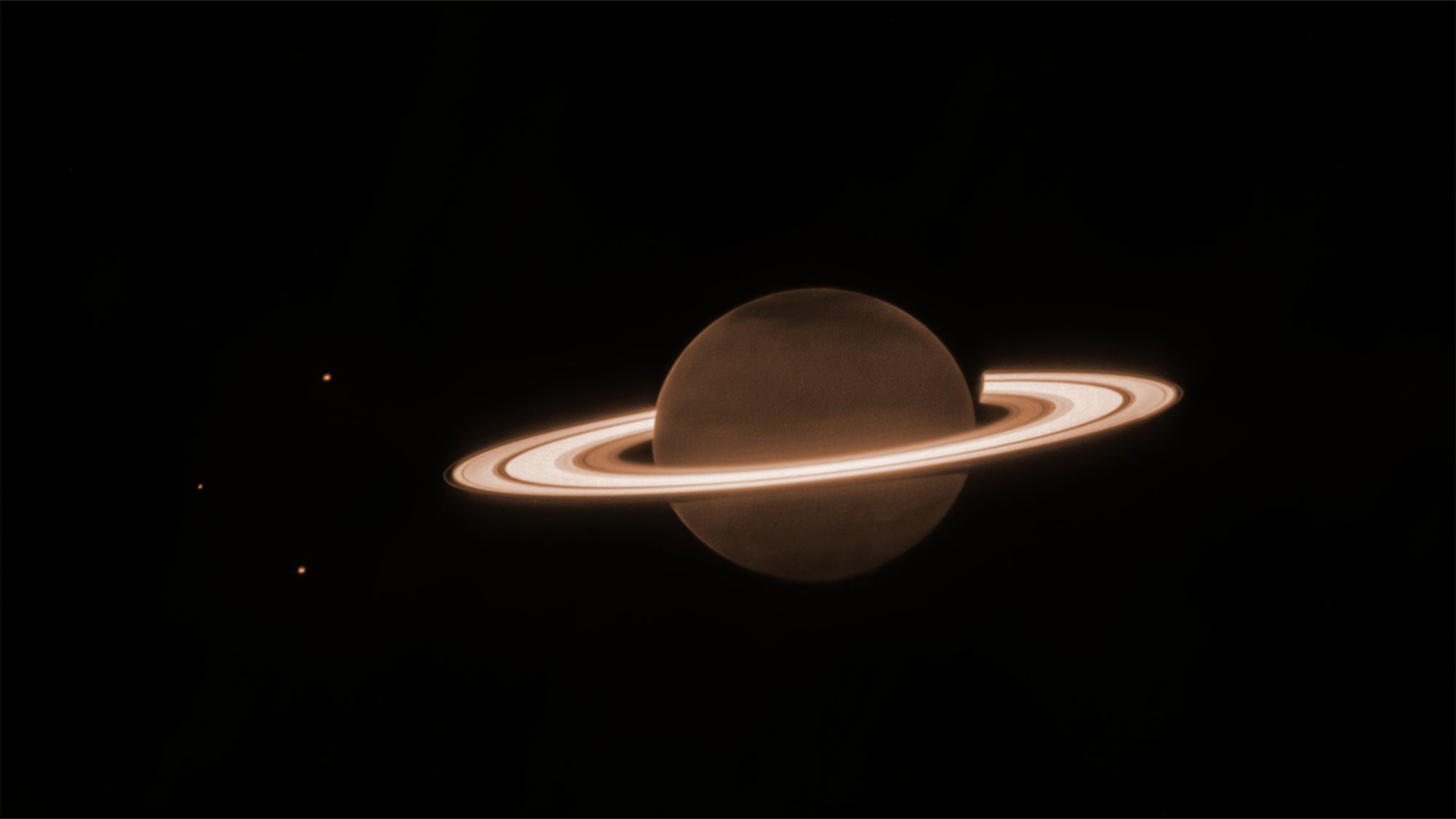

It’s been almost one year since NASA’s James Webb Space Telescope (JWST) released its first finds to the public. Now the JWST has its sights set on the ringed planet Saturn. On June 25, JWST used its hard working Near-Infrared Camera (NIRCam) to capture stellar images of Saturn using near-infrared observations for the first time.
[Related: NASA hopes its snake robot can search for alien life on Saturn’s moon Enceladus.]
The planet itself appears very dark at this infrared wavelength observed by the telescope. The methane gas in the planet absorbs almost all of the sunlight that is falling on the atmosphere. Its famed icy rings are still relatively bright, making Saturn look a bit more unusual.
This new image was taken as part of Webb Guaranteed Time Observation program 1247. Several very deep exposures of the sixth planet from the sun, which were designed to test JWST’s capacity to detect faint moons around Saturn and its bright rings. Newly discovered Saturnian moons could help scientists paint a more complete picture of the planet’s current system and its past history.

Saturn’s ring system is shown in clear detail along with several of the planet’s over 140 known moons—Dione, Enceladus, and Tethys. Deeper exposure will help the team probe some of Saturn’s more faint rings that aren’t visible in this image. These include the thin G ring and the diffuse E ring. The rings of Saturn are made up of rocky and icy fragments, with particles running in size from smaller than a single grain of sand up to some that are as large as mountains here on Earth. Researchers recently used JWST to explore the moon Enceladus, and found a large plume jetting from its southern pole that contains both particles and plentiful amounts of water vapor. This moon plume feeds Saturn’s E ring.
The image also shows Saturn’s atmosphere in some surprising and unexpected detail. The Cassini spacecraft observed the atmosphere at greater clarity, but this is the first time that the atmosphere has been observed this clearly at this particular wavelength (3.23 microns), which is unique to JWST. The planet’s northern hemisphere has large, dark, diffuse structures that don’t follow its lines of latitude, so according to NASA, this image is lacking the familiar striped appearance that is typically seen from Saturn’s deeper atmospheric layers.
[Related: Saturn’s rings have been slowly heating up its atmosphere.]
Comparing Saturn’s northern and southern poles in this image shows differences that are typical with the known seasonal changes on the planet. Saturn is currently experiencing summertime in its northern pole, with the southern pole emerging from darkness at the end of its winter. However, it also shows a particularly dark northern pole, due to an unknown seasonal process that is particularly affecting polar aerosols. There is a small hint of brightening towards the edge of Saturn’s disk that could be due to a process called high-altitude methane fluorescence. During this process, light is emitted after it is absorbed. It could also be due to emission from the trihydrogen ion (H3+) in the ionosphere or a combination of both processes. Spectroscopy from JWST could help confirm the reason behind this brightness.
This new yet to be peer-reviewed data on Saturn will add to the famed Pioneer 11, Voyagers 1 and 2, missions and the decades of work done by the Cassini spacecraft and the Hubble Space Telescope.
